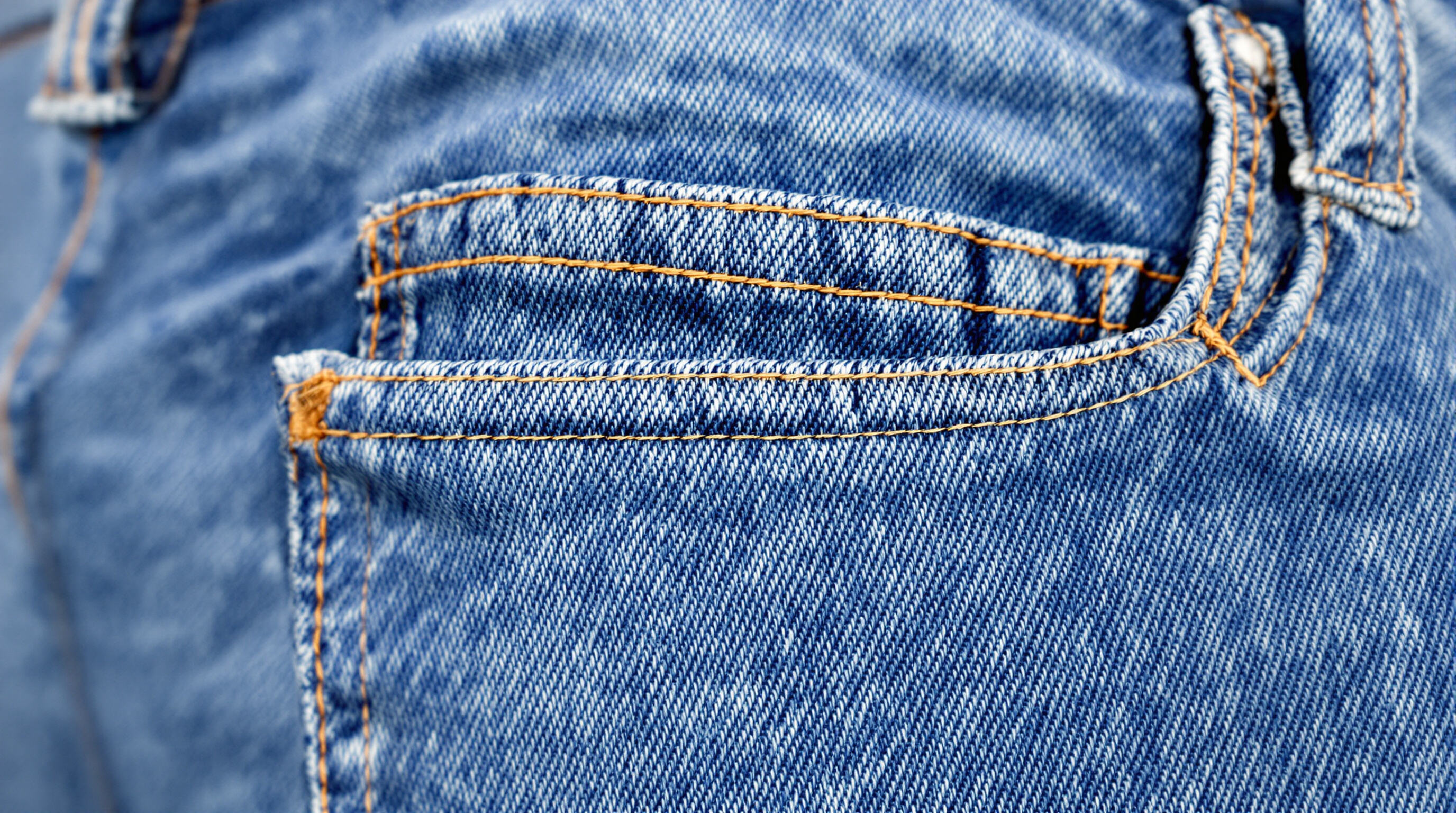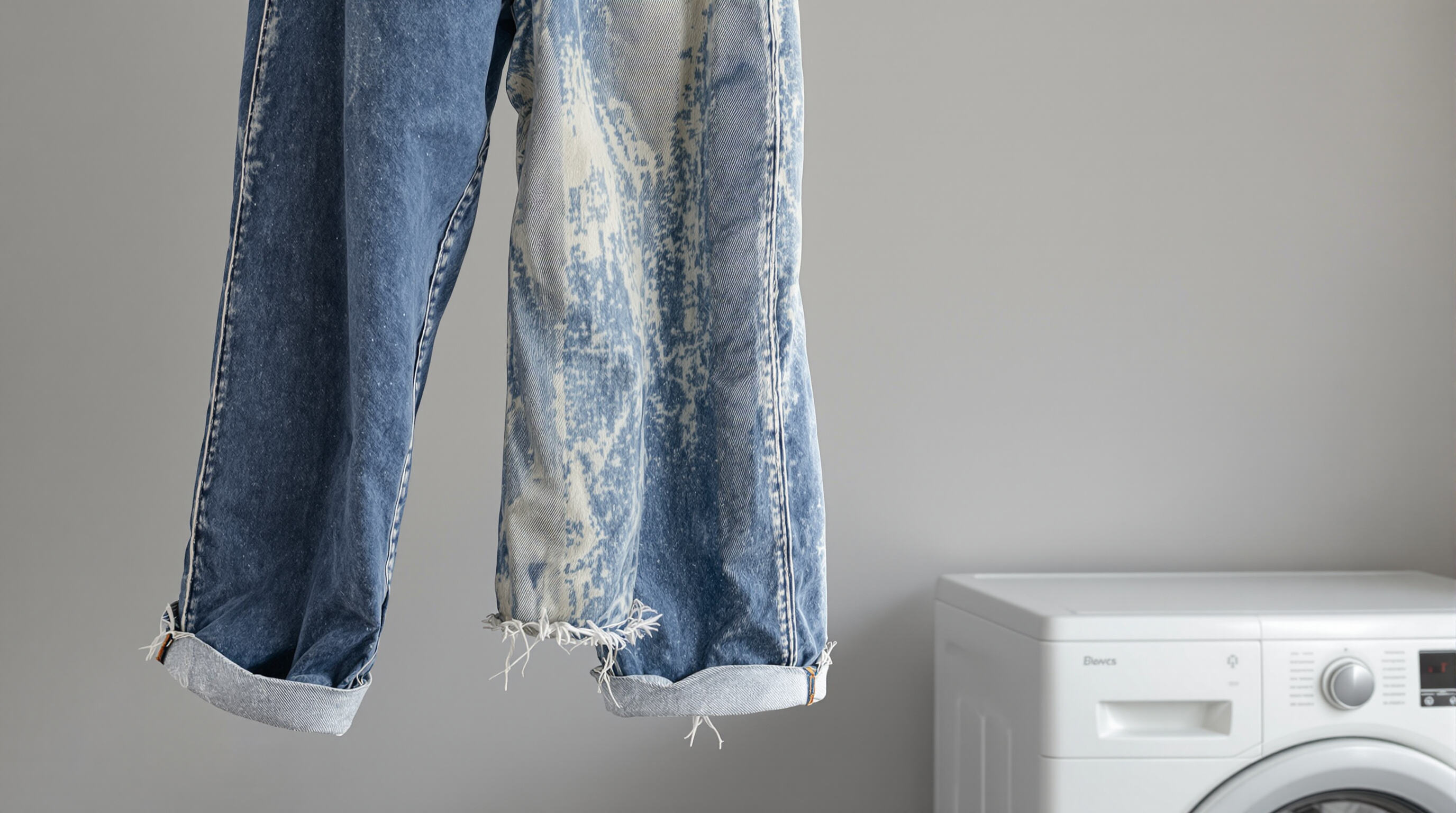
Stretch denim is basically regular cotton mixed with some synthetic stuff called elastane. Most manufacturers go with about 98% cotton and 2% elastane to get that right balance between being able to move comfortably and still holding up over time. The way this works is pretty clever actually. They create what's known as core-spun yarns where the cotton wraps around the elastane fiber inside. This keeps the fabric from stretching out completely but still lets people bend and twist without restriction. When looking at premium stretch jeans, brands tend to use longer staple cotton varieties such as Supima. These special fibers make the jeans much tougher against tearing, somewhere around 15 to maybe even 20 percent stronger than regular cotton according to recent studies in textile science.
The special polyurethane makeup of elastane lets stretch jeans bounce back to around 90 to 95 percent of their original shape after being stretched out, which stops those annoying sags forming around the knees and thighs area. Studies indicate denim containing between 1.5 and 3 percent elastane holds up really well over time, lasting through more than 500 wear tests according to the latest Textile Engineering research from 2024, all while keeping that nice flexible feel. On the flip side though, when there's too much elastane added beyond 5 percent, something strange happens to the fabric itself. The material becomes less dense overall, and this actually weakens how strong it is against tearing, especially noticeable in places where jeans get stressed like pockets and seam lines, sometimes dropping strength by nearly 30 percent in these critical spots.
Manufacturers enhance stretch denim longevity through strategic fiber combinations:
A 2024 analysis of 12,000 consumer reviews found that jeans with a 97% cotton/3% EA blend lasted 18 months longer than those with 95% cotton/5% EA, highlighting the importance of balancing stretch and resilience. Experts recommend limiting elastane to 2% in high-mobility designs for best results.

The tensile strength of denim basically tells us how resistant it is to tearing when pulled apart. High quality stretch denim usually hits over 150 Newtons thanks to tight weaving of cotton threads around polyester cores. These special core-spun yarns work differently from regular blends since the elastic material gets wrapped inside stronger fibers. According to recent findings from Textile Yarn Report 2023, this construction method boosts durability anywhere from 25 to 40 percent. That makes all the difference for jeans that need to hold up through daily wear, especially around areas prone to stress like seam lines and pocket corners where regular denim might start showing signs of weakness much sooner.
How stretch denim holds up in actual use really comes down to how well it resists friction. Tests using the standard Martindale method reveal something interesting about quality denim fabric. The good stuff can take around 30 thousand rubs before it starts to show signs of wear, which is actually double what most lightweight knit fabrics manage. The tight twill weave combined with some synthetic fibers helps keep those annoying little pills from forming on the surface while still allowing enough give for movement. A recent look at denim performance back in 2024 found that fabrics in the 8 to 10 ounces per square yard range strike just the right note between being tough enough not to tear easily and comfortable enough for everyday wearing.
Getting the right amount of elastane in fabric is pretty important for clothes that need to move with the body but still last. Most experts agree around 2 to 3 percent works well. However, when manufacturers go overboard with spandex at 5% or higher, those fabrics tend to lose about a third of their bounce back ability after somewhere between 50 and 75 washes, which means they just won't hold their shape anymore. Regular stiff denim simply doesn't have enough give in all directions for what people actually need these days. Fortunately, new yarn technology has come along that solves this problem. By weaving elastane right into the cotton and polyester mix, fabric makers can create jeans that stay comfortable through countless wears while also holding up better over time.
The innovation of core-spun yarns has made a real difference in stretch denim production. These yarns wrap elastane fibers inside protective layers of cotton or polyester. What this means is less direct contact between the fabric and elastic components when someone wears them. According to research published in Fabric Engineering Journal last year, such construction actually makes the material more resistant to wear and tear, with tests showing around 18% better performance against abrasion. Clothes made this way tend to last longer too, often staying good condition for an extra 12 to 18 months compared to regular stretch denim. Another benefit comes from how these yarns maintain even tension throughout the fabric's weave pattern. This helps prevent those annoying sagging areas that typically develop around knees and thighs after repeated wearing, something many people find frustrating with standard stretch jeans.
Most manufacturers rely on ASTM International guidelines when checking out important durability factors for fabrics. There's the breaking strength test, which is ASTM D5034-21 if anyone cares about the specifics. This basically tells us how much force it takes before the material just rips apart. Then we have the tear resistance test under ASTM D1424-21 that looks at how fast a little tear spreads across the fabric surface. Stretch denim tends to be weaker compared to regular denim because of all that elastane mixed in. According to recent studies from textile engineers in 2023, stretch varieties usually show around 15 to maybe even 20 percent less tensile strength overall. Makes sense really since adding stretchability generally compromises some structural integrity.
The Wyzenbeek test, which follows ASTM D4157 standards, basically involves rubbing denim fabric against cotton duck material until the yarns actually break apart. Most high quality fabrics can handle between 25 thousand to 40 thousand of these double rub cycles before showing signs of wear. For stretchier materials though, there's another approach called the Martindale test. This one uses special wool abrasives moved in those distinctive figure eight patterns to get a better sense of how much pilling happens over time. Looking at recent research published last year in the Textile Research Journal, some interesting results popped up regarding cotton polyester elastane blends. When manufacturers use core spun yarn technology in these three component fabrics, they maintain around 92 percent of their original abrasion resistance even after going through fifty full washing cycles. That's pretty impressive when considering regular household laundering habits.
When we talk about tensile strength in denim, what we're really measuring is how well the fabric holds up against pulling forces along those warp threads. Rigid selvedge denim can handle around 140 to maybe even 180 pounds per square inch, whereas good quality stretch denim sits somewhere between 80 and 100 psi. Stretchier versions might not start off as strong, but when it comes to bouncing back after being stretched or pulled, they actually perform better. Tests show these stretch denims regain about 98% of their original shape after getting deformed, compared to regular non-stretch denim that only gets back about 89%. These findings come from Denim Performance Reports published last year.

Frequent laundering accelerates elastane degradation and weakens cotton blends. A 2023 Laundry Science Study found that washing jeans after every two wears leads to 12% loss in elasticity within six months, compared to minimal loss when washed every 10 wears. High-heat drying worsens damage, causing up to 8% shrinkage due to fiber contraction.
Experts advise washing stretch jeans only when visibly soiled, using cold water and gentle detergents. For optimal care, turn jeans inside out before washing to reduce surface abrasion and preserve fabric structure.
When jeans go through the machine wash cycle, they face mechanical stress from all that spinning around, which slowly starts to fray those core spun yarns over time. Blended denim tends to lose about 18 percent of its tensile strength after going through roughly 20 washes because the elastane fibers just don't hold up so well. If folks want their jeans to last longer, air drying them instead of tossing them in the dryer makes a big difference. Also steering clear of bleach and other harsh chemicals helps keep those fibers intact. Tests on durability show something interesting too. Stretch jeans that get line dried actually maintain about 23% more elongation capacity compared to those dried in machines after sitting around for a whole year. Their stretch to recovery ratio stays pretty close to what it was originally, only drifting off by about 5% at most.
Stretch denim exhibits 18–22% lower tear resistance than rigid denim (ASTM D2261). Traditional 100% cotton denim withstands over 25,000 Martindale rubs, whereas 3% spandex blends average 18,000–20,000 cycles before showing wear. However, core-spun yarn technology improves stretch denim’s performance by 30%, creating a protective cotton layer around elastic fibers and narrowing the durability gap.
Stretch jeans with around 1 to 2 percent elastane keep roughly 85% of what regular denim is known for when it comes to lasting power, yet they still give much better flexibility. When the spandex content goes over 3%, things start breaking down faster in areas where there's lots of stress such as around the knees and those pesky pocket seams. So basically, we're looking at an uncomfortable choice between how long the jeans will last versus how comfortable they feel during daily wear. Most people seem okay with this compromise though because nobody wants to be stuck in stiff pants all day.
A 2023 survey of 1,200 users found that stretch jeans are replaced 34% sooner than rigid styles, with 72% reporting visible thinning within 12 months. Despite this, 68% of respondents prioritized comfort over maximum durability, reflecting strong market demand for flexible, wearable denim in everyday wardrobes.
The optimal stretch percentage for jeans is around 2 to 3 percent elastane, which balances comfort, flexibility, and durability.
Yes, washing stretch denim frequently can lead to faster degradation of elastane fibers and reduce fabric strength.
Stretch jeans can lose shape quickly if they contain more than 5% elastane, as excessive elastane weakens fabric integrity.
Copyright © 2025 by Foshan GKL Textile Co.,Ltd. — Privacy Policy